What is OEM?
Welcome to our insightful exploration of the term OEM, a concept that has become a cornerstone in the realms of technology and manufacturing. Often heard but not always fully understood, this term plays a pivotal role in how products are developed, manufactured, and brought to market.
As we delve into the intricate world of OEM, we will uncover its definitions, applications, and implications across various industries, particularly in IT and hardware manufacturing. Understanding OEM is crucial for grasping the complexities of modern manufacturing processes, strategic business relationships, and the lifecycle of products.
Join us as we unravel the layers of OEM and its profound impact on the global business landscape.
What Does OEM Stand For?
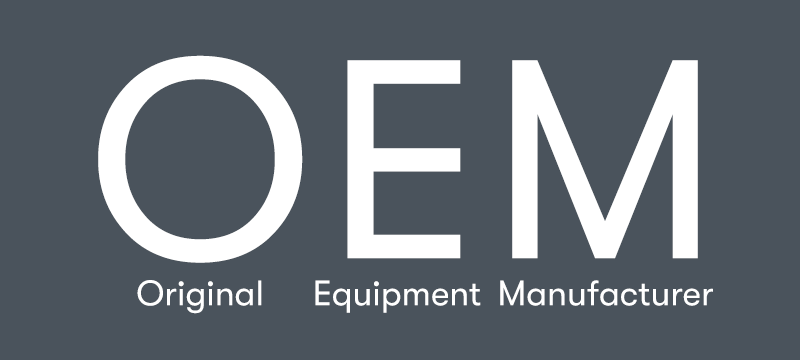
OEM stands for Original Equipment Manufacturer. This term refers to a company that produces parts and equipment that another manufacturer may market. For example, if a different company made a part in a car than the car manufacturer, that part's maker is the OEM.
In the context of software, OEM can refer to the software version bundled with specific hardware from the original manufacturer. For instance, a computer might come with an OEM version of an operating system or software application, usually tailored for or licensed specifically for that hardware.
What is OEM (Original Equipment Manufacturer)?
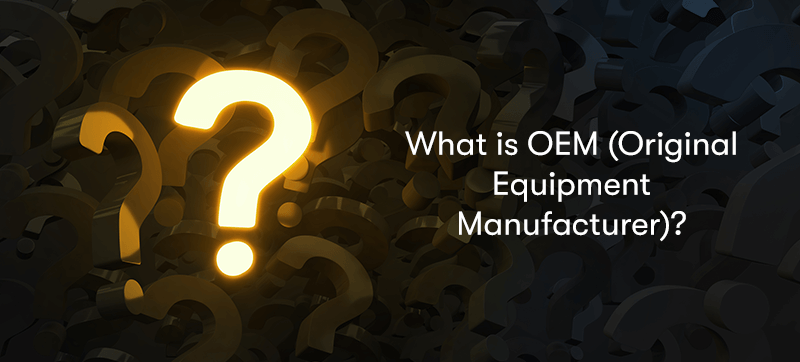
OEM, or Original Equipment Manufacturer, refers to a company that manufactures components or products used in another company's end product. Here are two common contexts in which OEM is used:
Automotive and Machinery Industries
In this context, an OEM refers to the company that manufactures components or parts used in the final assembly of products by another company. For example, if a company makes brake systems that are then used in a car produced by a different manufacturer, the company making the brake systems is considered the OEM.
Software and Computing Industries
In the world of software and computing, an OEM refers to a company that buys software or hardware from the original manufacturer and then sells it, often bundled with their own hardware or as part of a system. For example, a computer manufacturer might include an OEM version of the Windows operating system with their PCs. These OEM software versions are usually tailored or explicitly licensed for sale with the hardware, often at a lower cost than retail versions.
In both cases, the term OEM highlights a relationship between the manufacturer of a component or software and the company that ultimately sells the final product to consumers.
What is the Purpose of Original Equipment Manufacture in IT?
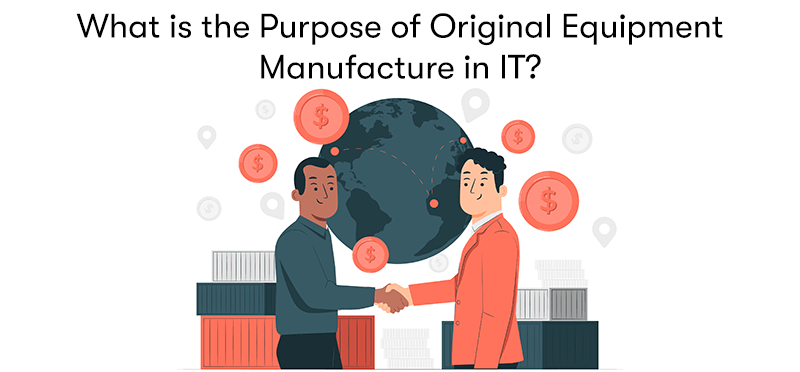
In the IT (Information Technology) context, Original Equipment Manufacturer plays a significant role with several key purposes:
Cost-Efficiency
OEM partnerships often allow for software or hardware acquisition at reduced costs. Because OEM products are typically purchased in bulk without the frills of retail packaging or extensive marketing, they are less expensive. This cost-efficiency is beneficial for both the manufacturer and the customer.
Customisation and Integration
OEMs in IT can customise software or hardware to fit the specific needs of their product or system. This means that a computer manufacturer, for instance, can offer systems with pre-installed software that is optimised for their hardware, enhancing performance and user experience.
Brand Enhancement
By associating with reputable OEMs, companies can enhance their brand value. Offering high-quality, reliable OEM products as part of their systems can increase customer trust and satisfaction.
Streamlined Support and Warranty Services
When hardware and software are sourced from an OEM, it often simplifies support and warranty services. Since the system components are designed to work together, diagnosing and resolving issues can be more straightforward, and warranty claims can be handled more efficiently.
Market Expansion
OEM partnerships can open new markets to manufacturers. By including their products as part of a more extensive system, they can reach customers who might not have been exposed to them otherwise.
Time to Market
For companies assembling IT systems, OEM components can speed up the time-to-market for their products. Since the components are already developed and tested, the company can focus on creating and distributing the final product.
Compliance and Compatibility
OEMs ensure that their components comply with industry standards and are compatible with other systems. This is crucial in IT, where interoperability and adherence to standards are important for the seamless operation of complex systems.
In summary, OEMs in the IT industry provide cost-effective, customised, and integrated solutions that enhance brand value, streamline support, expand market reach, reduce time-to-market, and ensure compliance and compatibility. This relationship is vital for the efficient operation and growth of the IT industry.
Why is OEM Important for IT Businesses
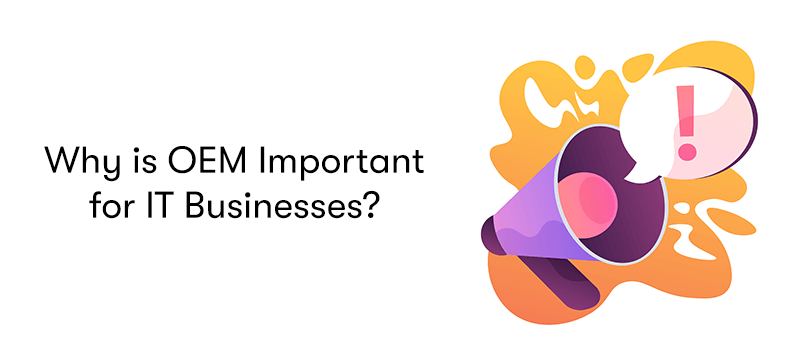
OEM relationships are vital for IT businesses due to several key reasons:
Cost Efficiency
IT businesses can save significant costs by purchasing OEM products, which are often sold at a lower price than retail versions. This is particularly beneficial for small and medium-sized businesses with limited budgets.
Product Customisation and Optimisation
OEM components can be customised to meet the specific requirements of an IT business. This means a company can have hardware or software specifically tailored to optimise performance for their particular applications or systems.
Brand Reliability and Trust
Using reputable OEM products can enhance a business's brand reputation. When customers know that a company uses high-quality OEM parts or software, it builds trust and reliability in the brand, which can be a significant competitive advantage.
Enhanced Product Offerings
IT businesses can expand and enhance their product offerings through OEM partnerships. By integrating OEM products, they can offer a more comprehensive solution to their customers, which can include advanced features or capabilities that may not be feasible to develop in-house.
Faster Time to Market
Leveraging OEM products can accelerate the time to market for an IT business's products or services. Since the components or software are already developed and tested, the business can focus on the final assembly, integration, and delivery, thus speeding up the product launch process.
Technical Support and Warranty
OEMs often provide dedicated technical support and warranty for their products. This support can be invaluable for IT businesses in ensuring that any issues are quickly resolved and that the products maintain high performance and reliability.
Compliance and Compatibility
OEM products are typically built to comply with industry standards, ensuring compatibility with other products and systems. This is crucial in IT, where interoperability is essential for the smooth functioning of complex technological ecosystems.
Access to Latest Technology
Through OEM partnerships, IT businesses often have access to the latest technology and innovations. This allows them to stay competitive and offer cutting-edge solutions to their clients.
In summary, OEM is essential for IT businesses because it offers cost efficiency, customisation, brand enhancement, expanded product offerings, faster time to market, reliable support, compliance with standards, and access to the latest technology. These factors collectively contribute to IT businesses' growth, competitiveness, and success in a rapidly evolving technological landscape.
What's the Difference Between OEM and Aftermarket in IT?
In the IT sector, the terms OEM and aftermarket refer to different sources and types of products, and they come with distinct implications for quality, compatibility, and cost. Here's a breakdown of the differences:
Source and Manufacturing
OEM: OEM products are made by the original equipment manufacturer or by a company that serves as an authorised producer of parts for the original company. These products are often designed specifically for certain systems or software and are usually the exact parts used in the initial configuration.
Aftermarket: Aftermarket products are produced by companies other than the original manufacturer and are designed to be compatible or function similarly to the original parts. They are not affiliated with the original manufacturer.
Compatibility and Integration
OEM: Because they are made by the original manufacturer or under their license, OEM parts and software are typically guaranteed to have full compatibility with specific systems, ensuring seamless integration and operation.
Aftermarket: Compatibility can vary with aftermarket products. While many are designed to be universally compatible, there can be instances where they need to integrate more seamlessly with specific systems.
Quality and Reliability
OEM: OEM products are generally considered high quality, as they are either produced by the original manufacturer or under strict specifications. This often ensures a higher level of reliability and performance.
Aftermarket: Quality in aftermarket products can vary widely. Some aftermarket manufacturers produce parts and software of equal or superior quality to OEMs, while others might offer lower-quality options.
Cost
OEM: OEM products tend to be more expensive than their aftermarket counterparts, partly due to brand name compatibility and quality assurance.
Aftermarket: One of the main attractions of aftermarket products is their lower cost. They are often cheaper than OEM parts, making them popular for budget-conscious consumers and businesses.
Warranty and Support
OEM: OEM parts typically come with a warranty and support from the manufacturer, which can include customer service and technical assistance.
Aftermarket: Warranty and support for aftermarket products depend on the manufacturer. Some offer limited support, while others provide comprehensive warranties and customer service.
Availability
OEM: These products may be readily available through the manufacturer or authorised dealers, but sometimes, they might be harder to find, especially for older models or systems.
Aftermarket: Aftermarket parts are often more widely available and can be found in various stores or online platforms, offering a broader range of options.
In summary, while OEM products in IT offer guaranteed compatibility, high quality, and manufacturer support at a higher cost, aftermarket products provide more variety, wider availability, and cost savings but with variable quality and compatibility. OEM and aftermarket choices often depend on specific needs, budgets, and preferences.
ODM vs OEM - What's the Difference?
ODM (Original Design Manufacturer) and OEM are terms often used in manufacturing and product development, and they refer to different types of companies with distinct roles. Understanding their differences is essential, especially in the electronics, IT, and consumer goods sectors.
Original Design Manufacturer
Role: An ODM is a company that designs and manufactures a product, which is then sold under another company's brand. In this case, the ODM does both the product development and manufacturing.
Product Ownership: The design and intellectual property of the product typically belong to the ODM.
Example: A company might approach an ODM with a concept or a basic specification for a product. The ODM then develops and manufactures the product, and the client company sells it under its brand name. This is common in electronics, where a brand might sell laptops, smartphones, or other gadgets entirely designed and built by an ODM.
Original Equipment Manufacturer
Role: An OEM manufactures products or components that are purchased by another company and retailed under that purchasing company's brand name. OEMs typically focus on mass production of products based on designs provided to them by the client.
Product Ownership: The client company retains design and intellectual property ownership. The OEM is responsible only for manufacturing the product.
Example: In the automotive industry, a car manufacturer might use various OEM parts like batteries, tires, and electronic components in their vehicles. These parts are manufactured by OEMs based on the car manufacturer's specifications and designs.
Key Differences Between ODM and OEM
Design Responsibility: ODMs design the products themselves, while OEMs manufacture products based on someone else's design.
Intellectual Property: ODMs hold the intellectual property for the products they design, whereas, in the OEM model, the client company retains the product's intellectual property.
Client's Involvement: In ODM, the client company's involvement in the product development phase is typically minimal, while in OEM, the client company plays a significant role in specifying what they want to be manufactured.
In summary, an ODM designs and manufactures products sold under another company's brand, while an OEM manufactures products based on another company's designs and specifications. The choice between ODM and OEM depends on the company's capabilities, resources, and business strategy.
How Does OEM Relate to Software?
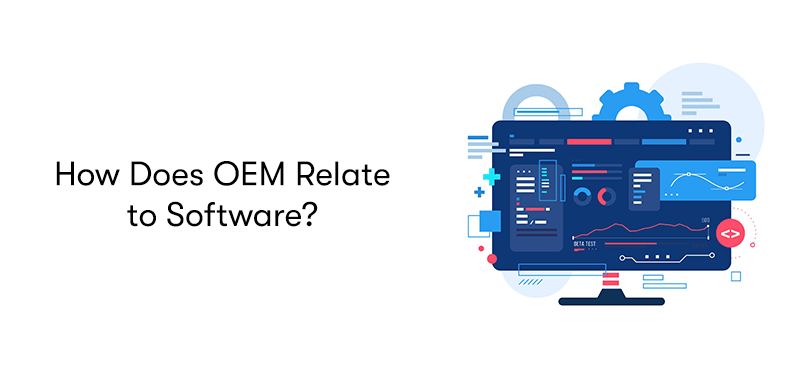
In the software industry, OEM has a specific meaning and application. Here's how OEM relates to software:
Bundled Software
OEM software typically refers to software bundled with hardware and sold by a hardware manufacturer. For instance, a new computer might come with an OEM version of an operating system (for example, Windows) or other pre-installed software. This software is usually tailored or optimised for the hardware it accompanies.
Licensing and Distribution
OEM software is licensed differently than retail software. The license is usually tied to the hardware with which the software is sold, meaning it's often non-transferable. For example, suppose you buy a computer with an OEM operating system. In that case, the license of that OS is tied to that specific computer and is not legally transferable to another machine.
Cost Effectiveness
OEM software is generally less expensive than retail versions. This is partly because it comes without the retail packaging and extensive user support accompanying retail software. The cost savings make it an attractive option for hardware manufacturers and the end-users.
Support and Warranty
The support for OEM software typically comes from the hardware manufacturer rather than the software developer. For instance, if you encounter issues with an OEM version of Windows on your new laptop, you would usually contact the laptop manufacturer for support, not Microsoft.
Customisation
In some cases, OEM software might be customised by the hardware manufacturer. This can include specific settings, default configurations, or additional software features designed to optimise the software's performance on the given hardware.
Market Strategy
For software companies, partnering with hardware manufacturers to offer OEM versions of their software is a strategic move to expand their market reach. It allows them to distribute their software more widely to audiences who might not purchase it separately.
Legal and Compliance Aspects
Both vendors and customers need to understand the legal aspects of OEM software. The licensing terms are usually more restrictive than retail software, and it's crucial to comply with them to avoid legal issues.
In summary, in the context of software, OEM refers to software bundled with and sold with hardware, typically having different licensing, distribution, and support arrangements compared to retail versions of the software. It's a cost-effective way for consumers to get software and for manufacturers to add value to their hardware products.
How Does OEM Relate to Hardware?
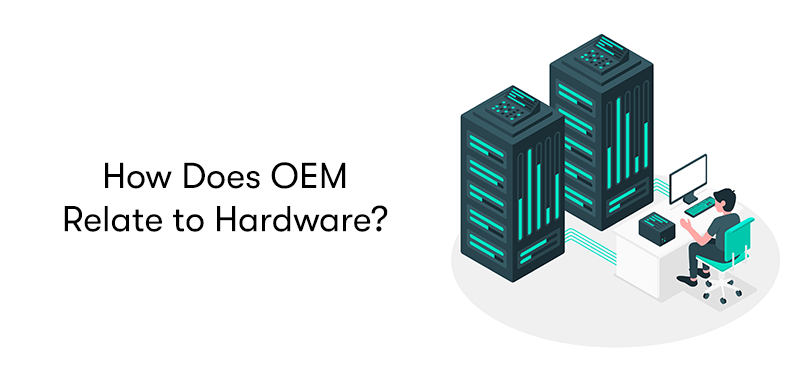
In the context of hardware, OEM has a specific and significant role. Here's how OEM relates to hardware:
Manufacturing and Branding
OEMs manufacture hardware that is used as components in another company's product. These components are then sold under the company's brand name that assembles and markets the final product. For instance, a company might manufacture hard drives (the OEM) used in another company's computers.
Tailored Solutions
Often, OEM hardware is custom-made to fit the specifications of the purchasing company. This means the hardware can be optimised for specific performance needs, sizes, or capacities, depending on the final product's requirements.
Cost Efficiency
For the company purchasing OEM hardware, this approach can be more cost-effective. Since they buy directly from the manufacturer, usually in large quantities, they can often negotiate lower prices.
Quality Assurance and Consistency
OEMs are typically held to high standards of quality, as their components play a crucial role in the overall performance and reliability of the final product. Consistent quality is vital, as these components often integrate closely with other parts of the final product.
Supply Chain and Logistics
OEM relationships are a critical part of supply chain management. The coordination between an OEM and the company using its components is essential for ensuring timely production and delivery of the final products.
Support and Warranty
Typically, support and warranty services for OEM hardware are provided by the company that brands and sells the final product, not the OEM itself. However, OEMs might provide support directly to the other company for technical aspects related to the components.
Licensing and Compliance
In some industries, OEM hardware must meet specific regulatory standards or certifications. The OEM is responsible for ensuring that their components comply with these standards.
Strategic Partnerships
OEM relationships can lead to strategic partnerships where the manufacturer (OEM) and the company that integrates the components into its products work closely on product development, innovation, and improving market offerings.
Market Expansion
Being an OEM allows hardware manufacturers to expand their market reach without having to develop and market a complete end-user product. They can focus on what they do best – manufacturing components.
In summary, in the hardware sector, OEM refers to manufacturing components or products used as parts of another company's products, sold under that company's brand name. This relationship is integral to product development, supply chain management, cost efficiency, and market strategies in various industries.
How Does OEM Relate to ITAM?
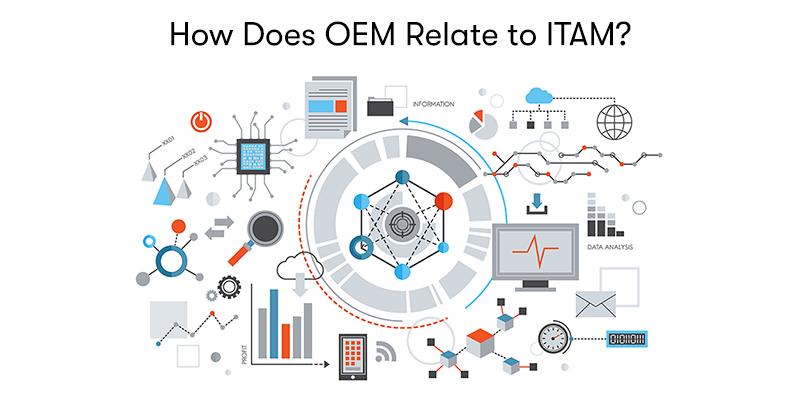
OEM plays a crucial role in ITAM (IT Asset Management). This practice involves managing and optimising the acquisition, deployment, maintenance, utilisation, and disposal of software and hardware within an organisation. Here's how OEM relates to ITAM:
Asset Acquisition and Procurement
In ITAM, understanding the OEM of hardware and software assets is essential for procurement strategies. Decisions about purchasing OEM products directly from the manufacturer or through a reseller can impact costs, licensing terms, and support options.
Licensing Management
OEM software comes with specific licensing agreements different from retail or volume licensing. ITAM professionals must manage and comply with these OEM licensing terms to avoid legal issues and ensure that the organisation uses software legally.
Warranty and Support
OEM hardware usually comes with a manufacturer's warranty. ITAM involves keeping track of these warranties for maintenance and support purposes. Knowing when warranties expire and what they cover is essential for effective asset management.
Asset Standardisation
Using OEM products can lead to greater standardisation within an IT environment. Standardisation can simplify maintenance, support, and management of IT assets. ITAM strategies often consider OEM relationships to maintain a standardised IT environment.
Lifecycle Management
ITAM involves managing the entire lifecycle of IT assets from acquisition to disposal. Understanding the OEM of these assets helps in planning for upgrades, replacements, and end-of-life processes. For instance, OEM hardware may have different end-of-life timelines than third-party or aftermarket products.
Cost Management
OEM products can impact the overall cost of IT assets. ITAM seeks to optimise costs, and considering OEM products in the procurement process can be a part of this, especially if OEM products offer cost benefits over retail versions.
Compliance and Auditing
ITAM involves ensuring compliance with various standards and regulations. This includes managing OEM licenses and ensuring that hardware and software comply with industry standards and company policies.
Risk Management
Managing risks associated with IT assets is a crucial part of ITAM. This includes understanding the risks related to OEM products, such as dependency on a single supplier, support limitations, or issues with warranty claims.
In summary, OEM is an essential aspect of ITAM as it influences procurement strategies, licensing management, asset standardisation, lifecycle management, cost optimisation, compliance, and risk management in an organisation's IT environment. Understanding and effectively managing OEM relationships and products are essential for successful IT asset management.
Final Notes on OEM
In conclusion, we have explored the multifaceted world of OEM and its significant impact across various domains, particularly IT and manufacturing. From the definition and purpose of OEM in IT businesses to the distinctions between OEM, ODM, and aftermarket products, our discussion illuminated OEM's crucial role in cost efficiency, product customisation, and market strategy.
We also delved into the nuanced relationships between OEM and software and hardware and its integral connection to ITAM. This comprehensive overview enhances our understanding of OEMs' pivotal role in technological and manufacturing sectors and underscores their influence in shaping business strategies, supply chain dynamics, and product lifecycle management.


